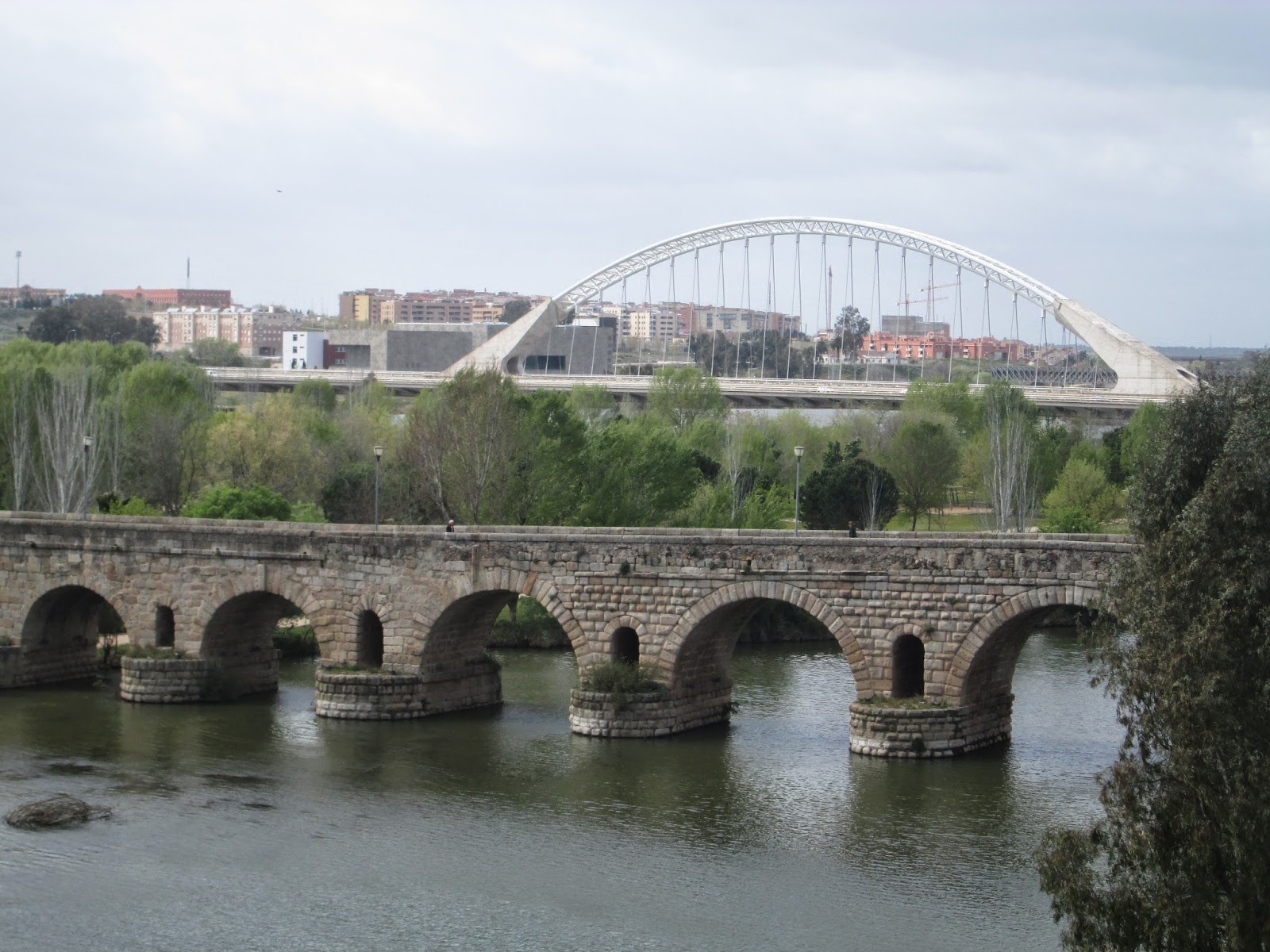Parada Nº 1: Mérida
 |
| This cat scared the living daylight out of me. |
My host, Vicen, has told me to visit Mérida, a city in the autonomous community of Extremadura, south of Castilla y León. The city is known for it's Roman ruins (which are all bundled together for tourists, I paid 6 euro for full access as a student)—as the city was once a major center for retired Roman soldiers, known as Emerita Augusta (notice the change from "Emerita" to Mérida, "Emerita" refers to "emeritus" soldiers who were retired and, moreover, retained status and honor). On my solo bus ride from Salamanca, we worked through the Extremadura countryside, featuring many hills, plains, and burros!
Teatro Romano
 This theater was constructed around 15 BCE and underwent renovation by Emperor Trajan. The theater shows a complete seating area (nobles sat at the front), and the theater includes a complete corridor, which ran beneath spectators. Marble structures litter the theater alongside a stage dominated by columns. In the summers, the city still uses the theater to put on classical productions. Here I started to realize that the best way to enjoy these sites would be to just take my time and soak everything in—so I just spent a few minutes sitting in the stands, imagining what the atmosphere must have been like over 2000 years ago.
This theater was constructed around 15 BCE and underwent renovation by Emperor Trajan. The theater shows a complete seating area (nobles sat at the front), and the theater includes a complete corridor, which ran beneath spectators. Marble structures litter the theater alongside a stage dominated by columns. In the summers, the city still uses the theater to put on classical productions. Here I started to realize that the best way to enjoy these sites would be to just take my time and soak everything in—so I just spent a few minutes sitting in the stands, imagining what the atmosphere must have been like over 2000 years ago.
Anfiteatro Romano
Immediately next to the teatro lies the city's amphitheater (8 B.C.), used for Gladiator combate between men and, on occasion, between men and animals. The amphitheater contains a very complete seating area and the city provides many educational materials including drawings of gladiatorial armor and descriptions of the different types of combat. My favorite part of this experience was descending through the gladiator entrance into the arena. That brought the history to life for me and seriously encouraged me to take my time in the area.
Acueducto de los Milagros
 Translated as "aqueduct of miracles," this structure impressed me in a very different way from the aqueduct I saw in Segovia. The structure incorporates a mixture of brick and stone, something I began to notice quickly in the other ruins in Mérida. The brick helped because the Romans would have never found enough stone to keep up with their construction needs, and thus they used brick and stone, which remained very strong. Today 73 pilars of the aqueduct remain, though some are deteriorated. The use of arches in the pillars, combined with the brick and stone alternation arguably inspired the arches in the Mezquita de Córdoba (read onto "Parada Nº 2: Córdoba" for more).
Translated as "aqueduct of miracles," this structure impressed me in a very different way from the aqueduct I saw in Segovia. The structure incorporates a mixture of brick and stone, something I began to notice quickly in the other ruins in Mérida. The brick helped because the Romans would have never found enough stone to keep up with their construction needs, and thus they used brick and stone, which remained very strong. Today 73 pilars of the aqueduct remain, though some are deteriorated. The use of arches in the pillars, combined with the brick and stone alternation arguably inspired the arches in the Mezquita de Córdoba (read onto "Parada Nº 2: Córdoba" for more).Rápidamente:
Alcazaba de Mérida
The alcazaba, or fort, was a great surprise for me. Abd ar-Rahman II, moorish emir in Córdoba, built the alcazaba in the 9th century (he also played a role in the Mezquita de Córdoba). Again adding to its significance, the fort was the first Muslim alcazaba.
 |
| Old wall ruin. The moors used previous Roman and Visogoth structures to fortify. |
 |
| Followed a staircase and found this water basin (referred to as an aljibe or sótano). The coolest goldfish pond I've seen. |
 |
| The large open area of the Alcazaba features an outdoor museum with relics including Roman columns and complete coffins! |
 |
| View of the building containing the water basin underneath. |
Arco de Trajano

This very out-of-place arch, referring to the Emperor Trajan, was the main access point ("puerta de acceso") to the city's sacred temple district. The arch sits between two modern buildings built straight into the arch, showing how the city naturally melded the new into the old. To me, this was actually quite cool—even though it tampers with the ruin a bit.
Plaza de España
This main square impressed me, especially with the bright yellow-and-white town hall. The plaza doubles as a patio, with orange trees scattered throughout. Orange trees signify warm weather...now time to go southward!
Puente Romano

 Near the Alcazaba lies the Puente Romano, the longest surviving bridge from ancient times! The bridge is about 750 meters long!
Near the Alcazaba lies the Puente Romano, the longest surviving bridge from ancient times! The bridge is about 750 meters long!




No comments:
Post a Comment